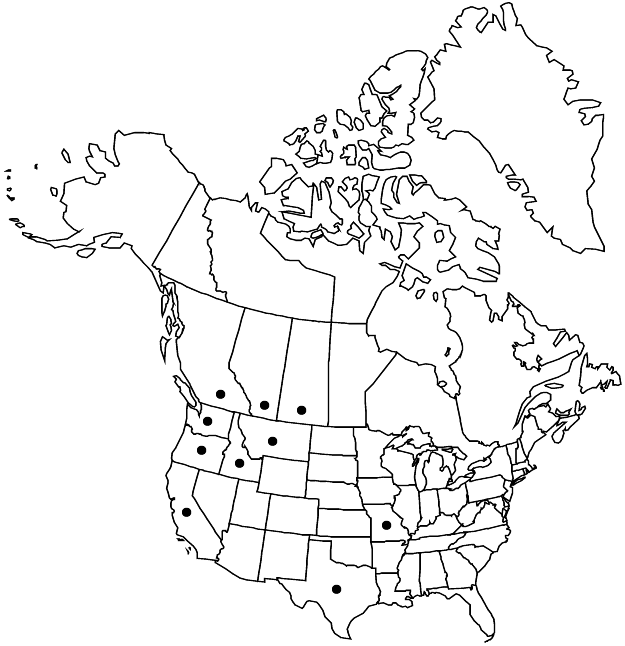Difference between revisions of "Silene conoidea"
Sp. Pl. 1: 418. 1753.
FNA>Volume Importer |
FNA>Volume Importer |
||
| Line 24: | Line 24: | ||
|elevation=0-1000 m | |elevation=0-1000 m | ||
|distribution=Alta.;B.C.;Sask.;Calif.;Idaho;Mo.;Mont.;Oreg.;Tex.;Wash.;Eurasia. | |distribution=Alta.;B.C.;Sask.;Calif.;Idaho;Mo.;Mont.;Oreg.;Tex.;Wash.;Eurasia. | ||
| − | |discussion=<p>Similar to Silene conica but larger in all its parts, S. conoidea is a rare adventive weed with showy flowers and inflated fruiting calyces.</p> | + | |discussion=<p>Similar to <i>Silene conica</i> but larger in all its parts, <i>S. conoidea</i> is a rare adventive weed with showy flowers and inflated fruiting calyces.</p> |
|tables= | |tables= | ||
|references= | |references= | ||
| Line 49: | Line 49: | ||
|publication year=1753 | |publication year=1753 | ||
|special status= | |special status= | ||
| − | |source xml=https://jpend@bitbucket.org/aafc-mbb/fna-data-curation.git/src/ | + | |source xml=https://jpend@bitbucket.org/aafc-mbb/fna-data-curation.git/src/8f726806613d60c220dc4493de13607dd3150896/coarse_grained_fna_xml/V5/V5_359.xml |
|subfamily=Caryophyllaceae subfam. Caryophylloideae | |subfamily=Caryophyllaceae subfam. Caryophylloideae | ||
|genus=Silene | |genus=Silene | ||
Revision as of 17:38, 18 September 2019
Plants annual; taproot slender. Stems erect, simple or with ascending branches, (20–)40–100 cm, coarsely puberulent, stipitate-glandular, viscid distally. Leaves: mid and proximal stem pairs connate, blade 1–several-veined, oblanceolate to narrowly lanceolate, (3–)5–12 cm × (3–)8–15 mm, apex acute, veins parallel; basal leaf blades oblanceolate and ± obtuse, sparsely to moderately puberulent on both surfaces, rarely subglabrous. Inflorescences several–many-flowered, open, bracteate; bracts resembling leaves but smaller. Pedicels ascending, straight, equaling or longer than calyx, densely stipitate-glandular, viscid. Flowers: calyx prominently 25–30-veined, lobed to 1/3 its length but splitting further in fruit, umbilicate, narrowly conic in flower, conic-ovoid and inflated in fruit, 20–30 × to 15 mm, margins dentate, puberulent and stipitate-glandular, lobes 5, lanceolate, narrow, acuminate, veins parallel; corolla deep pink, clawed, claw equaling or longer than calyx, limb slightly lobed or unlobed, broadly obovate, spatulate, 8–12 mm, appendages 2–4 mm, lobed or dentate; stamens equaling claw; stigmas 3, equaling claw. Capsules flask-shaped, 15–20 mm, opening by 6 recurved, lanceolate teeth; carpophore to 2 mm. Seeds brown, reniform, 1.2–1.8 mm broad, tuberculate. 2n = 20, 24 (Europe, Asia).
Phenology: Flowering early summer.
Habitat: Dry waste places, roadsides, arable land
Elevation: 0-1000 m
Distribution

Alta., B.C., Sask., Calif., Idaho, Mo., Mont., Oreg., Tex., Wash., Eurasia.
Discussion
Similar to Silene conica but larger in all its parts, S. conoidea is a rare adventive weed with showy flowers and inflated fruiting calyces.
Selected References
None.